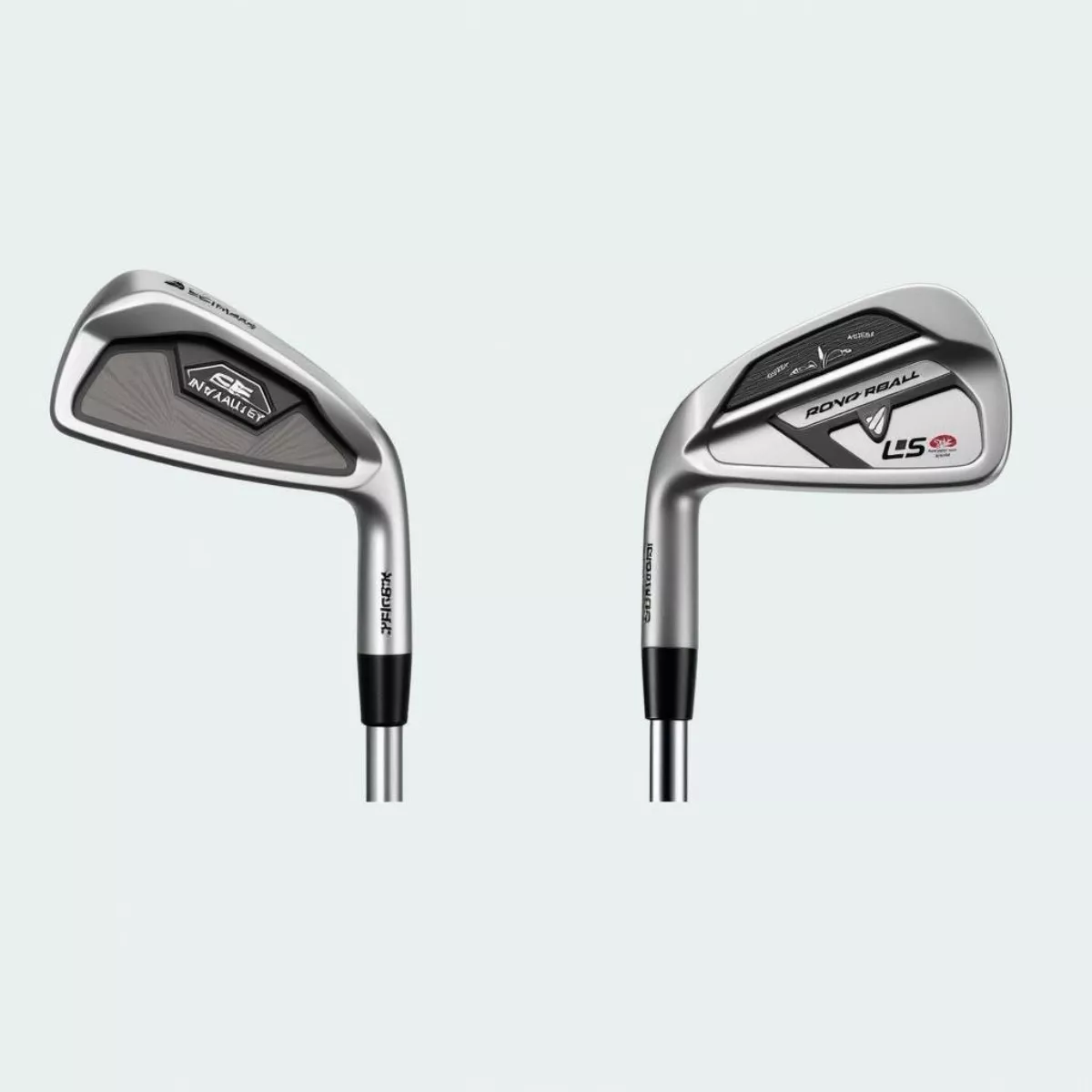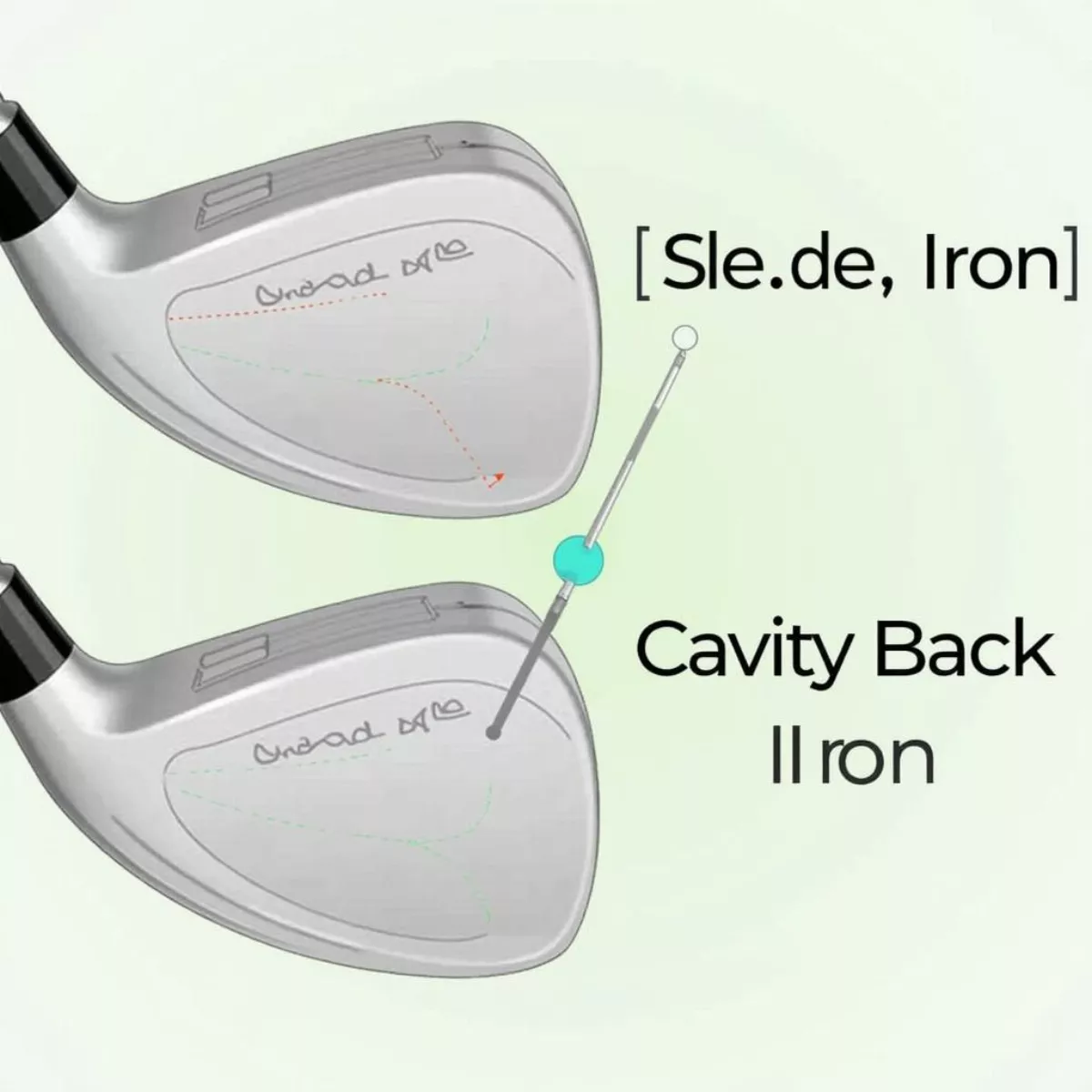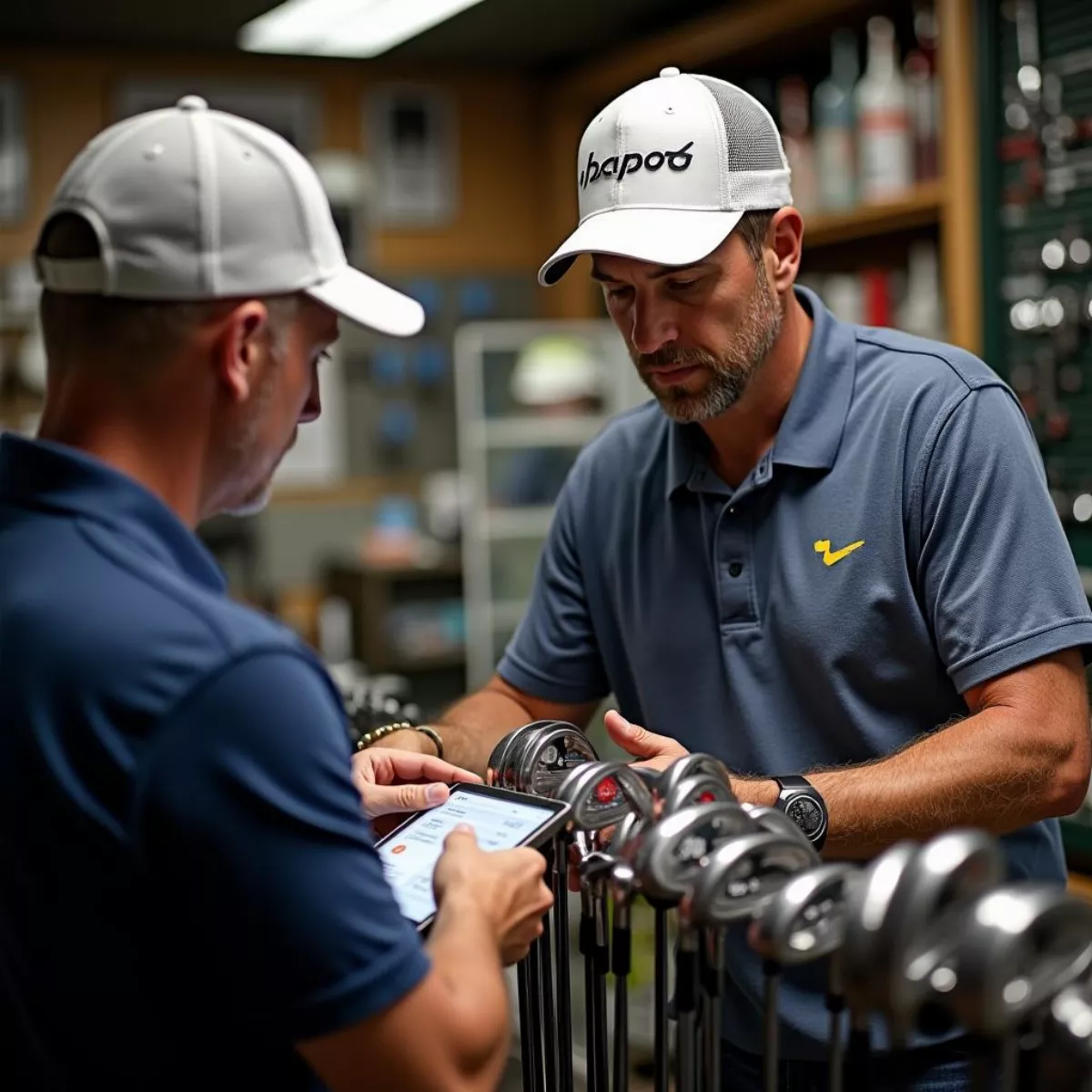When it comes to improving your golf game, choosing the right set of irons can make all the difference. Among the plethora of options available on the market, two distinct types stand out: blade irons and cavity back irons. Understanding their characteristics can be challenging. This article will provide you with an in-depth comparison of blade and cavity back irons to help you make an informed decision.
 Blade Iron vs Cavity Back Iron
Blade Iron vs Cavity Back Iron
What Are Blade Irons?
Blade irons, often referred to as muscle-back irons, are designed to offer precision and shot control. Here’s an overview of their key features:
- Construction: Made from a single piece of forged metal, which typically provides a soft feel and lighter weight.
- Design: A thin clubface with a smaller sweet spot, promoting a traditional look.
- Weight Distribution: Weight is concentrated in the clubhead, allowing for better shot shaping.
Pros of Blade Irons
- Directional Control: Offers greater control for skilled players who can consistently strike the ball.
- Workability: Easier to shape shots and control trajectory, making them popular among low handicap players.
- Feel: Many golfers appreciate the feedback provided by the forged material in blade irons.
Cons of Blade Irons
- Difficulty: Not as forgiving, requiring precise ball striking to maximize performance.
- Lower Launch: Less height on shots, which may affect distance depending on player skill level.
- Limited Sweet Spot: Hitting outside the sweet spot can result in poor distance and accuracy.
What Are Cavity Back Irons?
Cavity back irons feature a more forgiving design that appeals to a broader range of golfers, especially beginners and mid-handicappers. Here’s a closer look at their design:
- Construction: Hollowed out back, which redistributes weight to the perimeter or base of the club, enhancing stability.
- Design: Larger clubhead offers a larger sweet spot and a more balanced appearance.
- Weight Distribution: The perimeter weighting allows for more forgiveness on off-center hits.
Pros of Cavity Back Irons
- Forgiveness: Perfect for players who are still developing their skills and need a club that compensates for mishits.
- Higher Launch: Typically provides a higher launch angle compared to blade irons, assisting in distance.
- Confidence: Many players feel more comfortable and confident using cavity back irons due to their size and performance.
Cons of Cavity Back Irons
- Less Control: Limited ability to shape shots and control trajectory compared to blade irons.
- Feedback: The feel and feedback may not be as refined as that provided by blade irons.
- Target Audience: Primarily suited for higher handicap players, which may deter advanced golfers from using them.
 Golf Iron Impact Comparison
Golf Iron Impact Comparison
Blade Irons vs Cavity Back Irons: Key Comparisons
To help you better understand the differences between blade irons and cavity back irons, we’ve put together a comparison chart:
| Feature | Blade Irons | Cavity Back Irons |
|---|---|---|
| Feel | Soft, responsive | Firm, stable |
| Forgiveness | Low | High |
| Shot Control | Excellent | Average to Good |
| Weight Distribution | Centered | Perimeter |
| Sweet Spot | Smaller | Larger |
| Player Skill Level | Advanced | Beginners to Intermediate |
Which Type Should You Choose?
When choosing between blade irons and cavity back irons, consider the following factors:
1. Skill Level
- If you’re a seasoned player with the ability to consistently hit the ball well, blade irons may enhance your control and shot shaping abilities.
- Cavity back irons are ideal for beginners or intermediate players who need help with mis-hits and forgiveness.
2. Playing Style
- Do you prefer taking risks on the course and crafting unique shots? Blade irons will suit you better.
- If consistency and reliability are your focuses, look to cavity back irons.
 Golfer Choosing Irons in Pro Shop
Golfer Choosing Irons in Pro Shop
3. Feedback Preference
- Many experienced golfers enjoy the tactile feedback from blade irons, while many mid-handicappers appreciate the solid feel of cavity backs.
4. Budget Considerations
- Blade irons often have a higher price point due to their specialized manufacturing, while cavity backs are typically more affordable and accessible.
Key Takeaways
- Blade irons provide incredible control and feedback but require a higher skill level.
- Cavity back irons offer forgiveness and a larger sweet spot, catering excellently to beginners and intermediate players.
- When deciding, consider your skill level, playing style, feedback preference, and budget.
FAQs About Blade Irons vs Cavity Back Irons
1. Can beginner golfers use blade irons?
While it’s possible, it’s generally not recommended. Blade irons require advanced skills to maximize performance.
2. What is the primary benefit of cavity back irons?
They provide greater forgiveness for off-center strikes, making them easier to hit for most golfers.
3. Can I mix blade and cavity back irons in my bag?
Many golfers do! You can customize your bag to fit your playing style and preferences.
4. Do professional players use cavity back irons?
Yes, many professionals use cavity back designs, especially in their shorter irons or wedges.
5. How much do blade and cavity back irons typically cost?
Blade irons often range from $700 to over $1,000 per set, while cavity back irons can start from $400 up to $800.
6. Is it easier to learn with cavity back irons?
Yes, due to their forgiving nature and larger sweet spot, cavity back irons are generally easier for beginners.
7. Are blade irons suitable for all course conditions?
Blade irons can struggle in wet or soft conditions due to less forgiveness, whereas cavity backs might perform better.
8. How do I know which iron is right for me?
Consult your local club professional or a fitting session to try different types and find out what feels best for your game.
9. Are there hybrid options available?
Absolutely! Many brands offer hybrid irons that combine characteristics of both blade and cavity back designs.
10. Do blade irons improve my game?
While blade irons can enhance shot control for skilled players, improvement ultimately depends on your practice and skill development.
 Golfer Hitting Iron Shot
Golfer Hitting Iron Shot
By understanding the differences between blade irons and cavity back irons, you can make a more informed decision that aligns with your skill level and playing style. Happy golfing!
